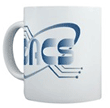SIGNIFICANT
BITS Happy New Year one and all! This will be my twelfth article for DACS.DOC. A lot has gone on in this space over 2007, including articles on PDAs, U3 drives, hard drive upgrades, music-production software, geocoding, mashups and more. Be sure to check out the DACS calendar on-line for General Meeting date changes for the first half of 2008. As noted in the August 2007 issue, the on-line calendar for DACS is the central source for events related to DACS. The January 2008 meeting topic is Web 2.0. Also, do not forget our ongoing on-line fund raising efforts at www.cafepress.com/dacsgear. LIGHTWEIGHT SERVERS FOR XP HOME It is possible to run a simple HTTP server from home off Windows XP Home. If only a minimum functionality is needed, try TinyWEB. It's possible to use CGI with TinyWEB without having to install any other language. CGI can be had using a .bat (DOS batch) file. If using a Netgear router, it's recommended to sign up for a free Dynamic DNS account at www.dyndns.org, which is one of the dynamic IP services supported by these units. This provides a URL that will always point to the home server even if the home IP connection is dynamically assigned, which is typical. Setting up TinyWEB was trivial. Merely unzip the archive and place a shortcut in the startup folder. A good place to put the extracted files is under Program Files in a folder called TinyWEB. Then, in the same directory make a shortcut that has the target as “c:\progra~1\TinyWEB\tiny.exe [path\of\the\document\root\directory]” and the start-in folder as “C:\progra~1\TinyWEB\”. The start-in folder is where the logs will be stored. Lastly, put a shortcut to this shortcut in the startup folder for all users, so no matter who was logged in the server would be running. Another program called TinyBOX is a GUI wrapper for TinyWEB. For the purposes above, TinyBOX seemed unnecessary and it put yet another icon in the system tray, which wasn't desired. A use for this setup could be to host a simple page or website, a test server, or to use some simple CGI to display the IP that the home server is connected to so one can VNC into the home server. LIGHTWEIGHT REMOTE ACCESS TO XP HOME Windows XP Home does not have either an HTTP or RDP server built in, so one workaround for the RDP part is to use something like VNC. A comparative table of remote desktop servers and clients can be had on Wikipedia with some searching. TightVNC is a good choice due to its simplicity, no cost, and being lightweight. It is not secure, however, so other choices may be more appropriate if security is a primary concern. TightVNC also works with Linux, unlike some other VNC software. Installing TightVNC is simple since it comes with an installer. It's possible to choose a password for merely viewing the remote desktop and one for full interaction with the remote desktop. Keep in mind that with VNC on Windows XP Home anyone in the same room as the computer will see what is being done remotely. This is a limitation of both VNC and Windows XP Home. The solution is to upgrade from Windows XP Home if this is not desired. CENTRALIZED MAIL LISTS Both my wife and I are fans of our PDA handhelds, and necessarily fans of Palm's Palm Desktop PIM software. It's useful to think of this application as a prefabricated database with forms and screens, rather than just PIM software. Besides our individual instances on each of our laptops, there's one on the main household desktop. This instance stores our mailing list used for our family newsletter and holiday cards. Using TinyWEB and TightVNC has proved to be a useful way to access that application on that machine to update these records. Palm Desktop has proven to be a good database to both store this information as well as an easy way for my wife and I to update the information. The other solution for this would possibly be to install a more powerful web and or application server, install and configure a CMS package, teach myself how to use it, then show my wife how to use it. Neither she nor I have time for such an activity, especially when we both already know how to work the Palm Desktop.
|
Mugs and more, visit CafePress to order
